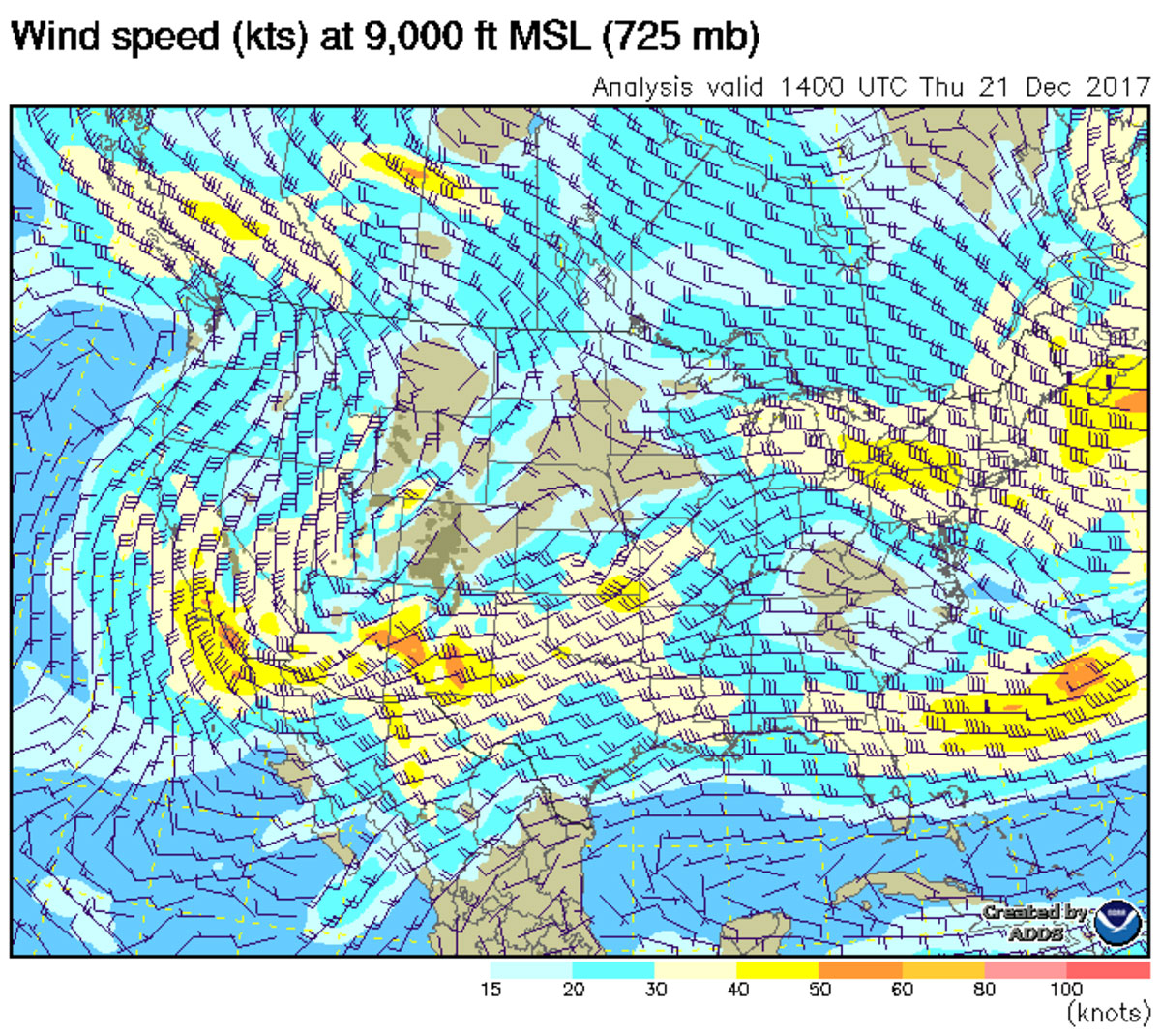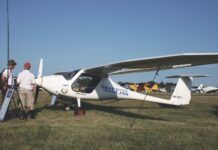Flying through the holiday season has its challenges – climatically, winter is blowing in and that means fast-moving systems with lots of cold. In the summer, we worry about heat energetic in the atmosphere kicking up connective activity. When cold, high pressure moves in it brings high winds and all the mechanical issues associated with low temperatures – cold engines, cold tires, cracking plastic and frosted up windows. Some of these are nuisances, some are hard on aircraft, and some – icing – can make flying hazardous.
As an example, we popped down to our cabin in Big Bear Lake, California for a few days this week to deliver Christmas presents to family and get a few necessary things done. The plan was to depart first thing Thursday morning for home (near Reno, NV). But a fast moving storm zipped through western Nevada on Wednesday (which was why we didn’t head back then), and the front pushed on the rough all the way to Southern California and in to Mexico, bringing strong, gusty winds even as the precipitation died out. The weather looked good for Thursday morning – but not the winds aloft. Now we most often fly cross-countries in fast airplanes, but this time, we brought our Tundra – a big cargo carrier that is doing great it if can true 120 knots. The nearly 360 nautical mile trip is just a touch over two hours in an RV – but runs about three and a half in the Tundra in no wind conditions.
It’s scenic – I’ll give you that. The Sierra Nevada rise steeply from the floor of the Owens Valley, cresting out at the highest point in the lower forty-eight just west of Lone Pine. We don’t have to cross the Sierra – but we do hit 10,000′ peaks between Bishop and Reno. And high winds blowing across any of those mountains creates significant turbulence. The morning forecast for Thursday was predicting 35- to 40-knot winds aloft at the minimum altitude we can use for the trip – and PIREPS from 737s were indicating moderate to severe turbulence climbing between 5,000 and 20,000 msl.
Nope – it might be sunny, and the surfaces winds could drop off – but with angry upper air like that, its best to just wait 24 hours and fly home with predicted light and variable winds. It might even be nice this afternoon – but it is the Winter Solstice, and that means an early sunset – and with a slow airplane, that means a departure in the afternoon could mean we make it back to an unlighted airpark runway.
There’s a lot that goes in to winter flying decisions – so take the time and do the right thing. And frankly, that’s not hard to do hen you’re “stuck” in a beautiful mountain valley wth Christmas lights and a cup of egg nog…
Have a great holiday everyone – and keep it safe!














